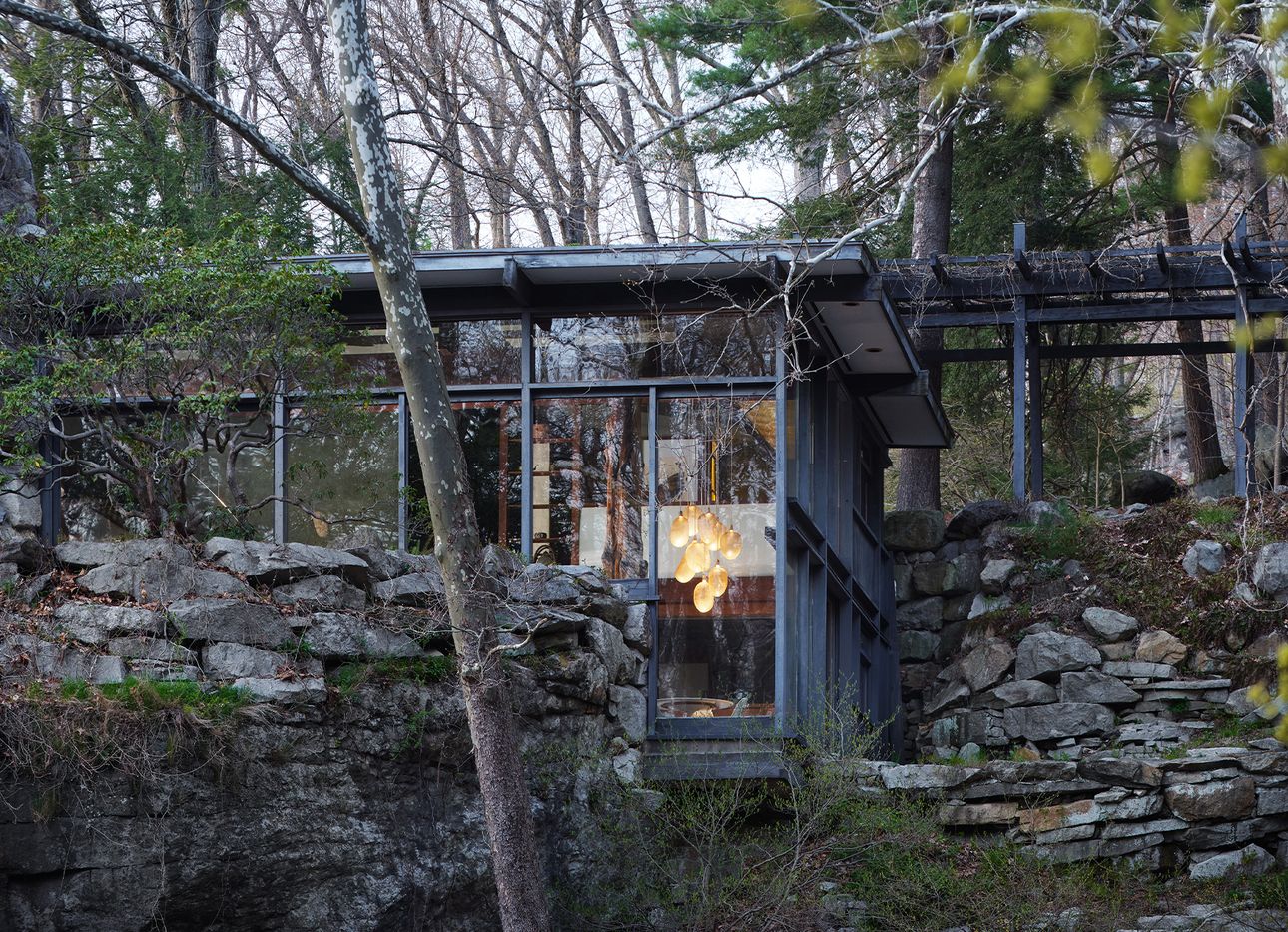
An Exhibition Posits How Design Can Be a Steward of Nature and the Future
Last week, the Earth slid between the moon and sun, inciting a heady lunar eclipse that transformed our usual relationship with the sky. It’s almost cosmic timing for Manitoga, a stunning midcentury home turned design center that’s nestled between a granite quarry and a mossy slope in upstate New York. Just two days before the eclipse, the space’s doors opened for its latest exhibition, “Designing Nature” (through November 14). Fittingly, the first piece visitors encounter is the Eclipse Ceiling Lamp, designed by the contemporary Italian studio Formafantasma in 2016, which casts new, entrancing light on its surroundings.
Presented by Manitoga in collaboration with Magazzino Italian Art, the show ingeniously pairs the 1962 home, conceived by the late American industrial designer Russel Wright (who named the house, studio, and its surroundings Dragon’s Rock), with the work of Formafantasma, a creative collaboration between designers Andrea Trimarchi and Simone Farresin. As Formafantasma’s organic vessels and glowing, tensile fixtures balance within Wright’s glass-and-stone home, common ground between the two design entities becomes clear: Both believe that design can powerfully deepen our relationship with the natural world. “Although separated by almost a century,” says Allison Cross, Manitoga’s executive director, “the work of both addresses environmental concerns and asks if design can be a steward of nature and our future.”
Wright indeed conceived his home and adjacent studio as a paean to their lush surroundings. Exterior architecture braids into the densely wooded landscape through cascading terraces and uninterrupted glass expanses, while inside, imaginative material experiments further blur design with nature: Sprays of hemlock needles embed into deep green walls, while butterflies create abstract patterns between translucent panels. While Wright had always infused his popular postwar dinnerware and furniture with a reverence for nature, the upstate property redoubled his interest in enhancing the connection of design and the great outdoors. As Jean Rosenwald, an early Manitoga employee, told The New York Times in 1991, “In order to have respect for nature, [Wright] believed you really had to sense it, have a sensual experience with it.”
It’s a fitting context for Formafantasma’s work, which strives to increase people’s awareness of our built and natural worlds. Works from several of the studio’s series—including Botanica (2011), Migration (2011), Craftica (2012), and Delta (2015)—position thoughtfully through the interiors. While these share Wright’s high regard for the Earth’s phenomena, they also inject distinctly contemporary, critical questions about the rapport between nature and human production. “In our own work, there is much more of a concern with the downsides of industrialization—intensive farming, in the case of these materials,” the duo wrote in a recent statement. “There is more of a critical voice.”
In Wright’s studio, three of Formafantasma’s gourd-like Botanica vessels, which the designers forged from a range of age-old plant-based plastics (as opposed to mass-produced, chemically created plastics that glut oceans) rest in front of a large glass window, fusing the contemporary objects with the historic interior and primordial landscape beyond. It’s a visual timeline that extends from from past to future, subtly connecting our contemporary creations with long-term consequences.
In the main house, Formafantasma’s New Reflector Floor (2016) likewise blurs distinctions between the built and the natural, and between the contemporary and the historic, acting as a time-and-space-bending portal. Its delicate spotlight illuminates a reflective brass plate on the stone floor that siphons reflections of treetops into the home, inverting ground and sky. Nearby, a series of semi-transparent, bulbous vessels created from organic materials—bladders and bones discarded from the food industry—line shelves, exploring organic, zero-waste alternatives to industrially produced materials.
But it’s the Eclipse Ceiling Lamp, the fixture situated not far from the front door, that most powerfully engages with Manitoga. Assembled from gently overlapping discs of polished gilded brass and travertine strung from gilded guitar strings, it casts an ethereal glow on the deep green wall behind it, which Wright embedded with hemlock needles from the property. It’s a simultaneously deeply intimate and expansively universal moment, connecting something as small and seemingly insignificant as a pine needle to a force as cosmic as an eclipse.